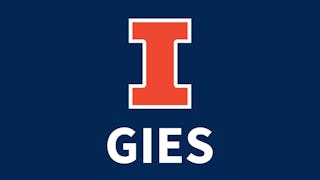Learners will obtain foundational knowledge and insights to begin to identify potential targets for innovation in healthcare. This course provides an overview of the healthcare ecosystem, which is comprised of diverse stakeholders, including hospitals and non-hospital entities within various healthcare value chains. The course will also introduce the healthcare innovation process and value creation. Emphasis is placed on key concepts and principles essential for efficiently designing and managing healthcare delivery systems.


Understanding the Healthcare Ecosystem
This course is part of Healthcare Innovation, Design, Entrepreneurship Specialization

Instructor: Sridhar Seshadri
Included with
What you'll learn
Identify diverse stakeholders in the healthcare ecosystem.
Analyze healthcare value chains, through roles and interrelationships of various stakeholders and their contributions and impacts within the system.
Define innovation processes as they apply to healthcare systems.
Skills you'll gain
Details to know

Add to your LinkedIn profile
27 assignments
See how employees at top companies are mastering in-demand skills

Build your subject-matter expertise
- Learn new concepts from industry experts
- Gain a foundational understanding of a subject or tool
- Develop job-relevant skills with hands-on projects
- Earn a shareable career certificate

There are 4 modules in this course
This module introduces the healthcare ecosystem, focusing on its structure and the dynamics among the various constituents. The module begins with an overview of the healthcare system, highlighting significant issues, gaps, and emerging trends. It underscores the roles of various stakeholders, including physicians, nursing staff, hospitals, and the extensive supply chain, including pharmaceutical firms, biotech companies, medical device manufacturers, IT companies, regulators, and patients. The module addresses the relationship between healthcare spending and GDP growth, highlighting sustainability concerns and the difficulty in achieving multiple goals regarding cost, quality, and access. It discusses the demographic and policy challenges of the uninsured population in the U.S. It briefly reviews the changing healthcare ecosystem and invites learners to explore what is happening in other industries. By laying this foundational knowledge, the module prepares learners for a deeper exploration of the healthcare ecosystem's intricate and evolving landscape in subsequent modules.
What's included
11 videos7 readings8 assignments1 discussion prompt1 plugin
This module examines the complexities and opportunities within healthcare systems, focusing on how variations and integration play crucial roles. The module begins by examining the market for healthcare from a hospital's perspective, highlighting how variations in demand and supply drive the unique nature of hospital management. The Dartmouth Atlas is referenced to understand micro-area variations, shedding light on how different regions exhibit diverse healthcare dynamics. The module then delves into recent trends in costs and revenues and the interactions between providers, producers, and payers. These interactions create various forms of integration, influenced by regulatory changes and policy shifts. The discussion extends to matching organizational forms with their intended functions, presenting three prototypical approaches—asset-oriented, disease-oriented, and super-focused. Each approach is analyzed for its applicability and effectiveness in different healthcare contexts. We also explore how these forms dictate the type of innovation and the rate and direction of change. The module discusses opportunities to innovate by going beyond the producer-provider-payer system boundaries. Overall, the module underscores the importance of adapting to variations, embracing integration, and fostering innovation to improve healthcare systems. Learners are encouraged to think critically about these concepts and consider how they can be applied to address contemporary challenges in healthcare.
What's included
9 videos2 readings6 assignments
In this module, we will focus on the interdependent relationship between innovation and processes. Innovations change how tasks are performed, while processes guide these changes to ensure they are beneficial, measurable, and actionable. The module uses examples, including emergency rooms and telekiosks in remote areas, to illustrate these dynamics. We will also discuss key process metrics: flow rate and flow time. Understanding these metrics helps to improve patient flow and system efficiency and, thus, are ripe targets for innovation. We will emphasize integrating innovations into workflows, reducing unnecessary actions, reducing variability, and enhancing the quality and accessibility of healthcare services.
What's included
9 videos2 readings5 assignments
In this module, we will examine the supply chain, its organization, the players, the processes, and the key challenges, as well as opportunities to innovate. Many ideas are brought in from supply chain management in other industries, including the role of retailers, distributors, and wholesalers in matching demand and supply. The challenges discussed include coping with the huge variability in volume and variety in the healthcare system. The manufacturer's key problem is planning capacity when the approval process is uncertain and volumes are hard to predict. We study how the R&D cycle adds several more years to the length of the supply chain. We will discuss the important role of information technology (IT) and how it connects participants using platforms, enables other forms of communication, and propels change for healthcare systems by implementing a digital transformation strategy. In summary, the module presents the essential tension between maintaining momentum through innovation and containing cost and the mediating role of IT.
What's included
10 videos4 readings8 assignments1 plugin
Earn a career certificate
Add this credential to your LinkedIn profile, resume, or CV. Share it on social media and in your performance review.
Build toward a degree
This course is part of the following degree program(s) offered by University of Illinois Urbana-Champaign. If you are admitted and enroll, your completed coursework may count toward your degree learning and your progress can transfer with you.¹
Instructor

Offered by
Explore more from Leadership and Management
 Status: Free Trial
Status: Free TrialUniversity of Minnesota
 Status: Free Trial
Status: Free TrialUniversity of Illinois Urbana-Champaign
 Status: Free Trial
Status: Free TrialUniversity of Illinois Urbana-Champaign
 Status: Preview
Status: PreviewNortheastern University
Why people choose Coursera for their career





Open new doors with Coursera Plus
Unlimited access to 10,000+ world-class courses, hands-on projects, and job-ready certificate programs - all included in your subscription
Advance your career with an online degree
Earn a degree from world-class universities - 100% online
Join over 3,400 global companies that choose Coursera for Business
Upskill your employees to excel in the digital economy
Frequently asked questions
To access the course materials, assignments and to earn a Certificate, you will need to purchase the Certificate experience when you enroll in a course. You can try a Free Trial instead, or apply for Financial Aid. The course may offer 'Full Course, No Certificate' instead. This option lets you see all course materials, submit required assessments, and get a final grade. This also means that you will not be able to purchase a Certificate experience.
When you enroll in the course, you get access to all of the courses in the Specialization, and you earn a certificate when you complete the work. Your electronic Certificate will be added to your Accomplishments page - from there, you can print your Certificate or add it to your LinkedIn profile.
Yes. In select learning programs, you can apply for financial aid or a scholarship if you can’t afford the enrollment fee. If fin aid or scholarship is available for your learning program selection, you’ll find a link to apply on the description page.
More questions
Financial aid available,

